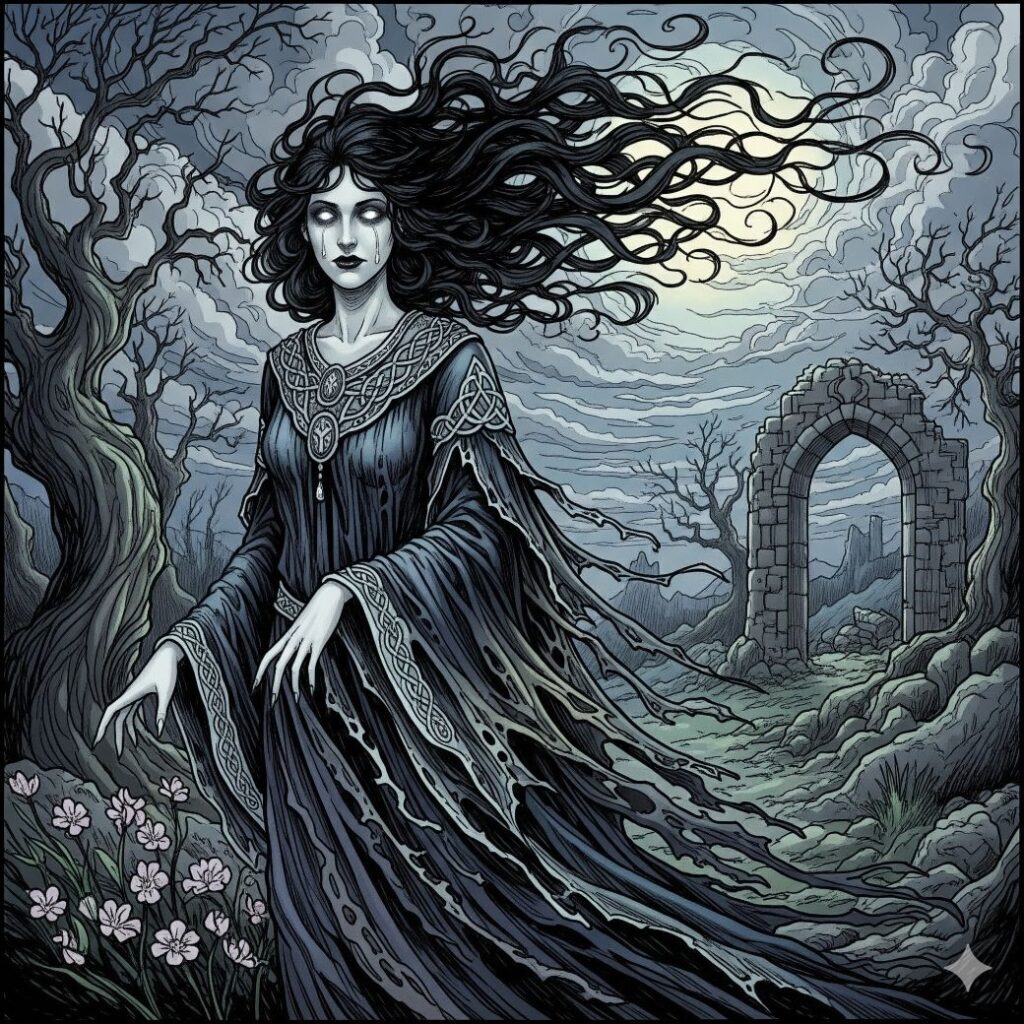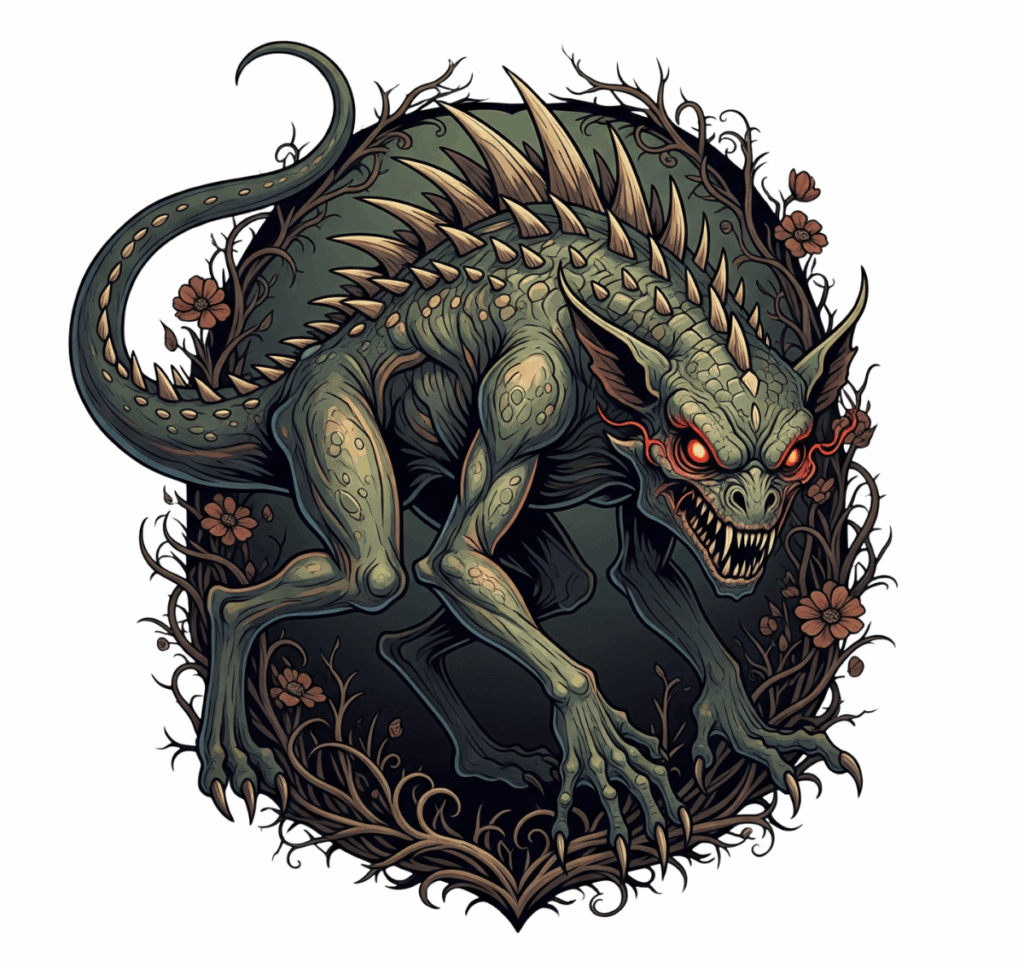The realm of scary mythical creatures has long captivated the human imagination, weaving intricate tales of the unknown and the supernatural. From the wailing banshees of Irish legend to the bloodthirsty chupacabras of Latin American folklore, these beings have become deeply embedded in the mythologies and traditions of diverse cultures worldwide. By exploring the origins, symbolism, and enduring appeal of these terrifying creatures, we gain insights into the human desire to grapple with the fears and mysteries that have shaped our cultural narratives.
Dive into the captivating world of scary mythical creatures and uncover the profound cultural significance they hold. Through this journey, we will unravel the enigmas that have captured the hearts and imaginations of people across the globe for centuries.
Key Takeaways
- Scary mythical creatures are deeply rooted in the cultural traditions and folklore of diverse regions around the world.
- These supernatural beings reflect the human desire to explore the unknown and confront our deepest fears.
- Studying the symbolism and significance of these creatures provides valuable insights into the evolution of cultural narratives and beliefs.
- Mythical creatures often serve as a way for communities to make sense of the unexplained and the unsettling aspects of the human experience.
- Understanding the enduring appeal of scary mythical creatures can shed light on the universal human need for storytelling and the exploration of the supernatural.
Exploring the Realm of the Supernatural
The allure of the supernatural has captivated human imagination for centuries, drawing us into the captivating world of mythology and folklore. From ancient civilizations to modern times, these enigmatic beings have been imbued with profound cultural significance, shaping the narratives and traditions that have been passed down through the generations.
The Allure of the Unknown
Mythical creatures, with their otherworldly attributes and mysterious origins, have long held a fascination for people across the globe. Their ability to tap into our deepest fears and curiosities has made them enduring fixtures in the cultural narratives of diverse societies. The unknown has a magnetic pull, and these supernatural entities offer a tantalizing glimpse into the unexplored realms of our collective consciousness.
Cultural Significance and Mythology
- Mythological creatures have been imbued with profound cultural significance, serving as symbols of power, protection, or even divine intervention.
- Across various cultures, these beings have been woven into rich tapestries of folklore, shaping the mythologies and traditions that define the unique identities of different civilizations.
- From the towering Kraken of Scandinavian lore to the enigmatic Chupacabra of Latin American folklore, these supernatural entities have captivated the imagination of people around the world.
The supernatural realm, with its endless possibilities and mystical allure, continues to captivate and inspire us, inviting us to explore the boundaries of the known and the unknown.
Banshees: Ireland’s Wailing Harbingers of Death
Like this image? It’s available in a variety of stickers, prints, apparel, and more.
In the rich tapestry of Irish folklore, the Banshee stands out as a captivating and foreboding figure. These shrieking female spirits are believed to be the harbingers of death, their haunting cries foretelling an imminent demise within the household that hears their wails.
The Banshee’s appearance varies across regional legends, from a beautiful young woman to a terrifying old crone with red, weeping eyes. Regardless of their physical form, the Banshee’s most distinctive trait is their mournful keening – a tradition of sorrowful wailing that signifies the impending arrival of the Grim Reaper.
The Origins and Lore of the Banshee
The Banshee’s origins can be traced back to the ancient Gaelic tradition of “keening,” a ritual of mourning where women would wail laments for the dead. Over time, these keening women became associated with supernatural harbingers of death, with each noble Irish family believed to have its own personal Banshee.
- The Banshee is often linked to specific ancient Irish families, with the Ua Briain Banshee, named Aibell, being a prominent example.
- In some legends, the Banshee’s appearance or presence is a sign of impending death, signaling the imminent demise of a family member.
- Accounts of Banshee encounters can be traced back to medieval literature, with the earliest known reference dating back to 1380.
The Banshee’s haunting legacy has endured through the centuries, captivating audiences worldwide and inspiring numerous depictions in media, from comic book characters to video game vehicles. While the belief in these wailing spirits may be largely considered folklore and superstition today, the Banshee remains a powerful symbol of the deep-rooted traditions and mysticism of Irish cultural heritage.
The legend of the banshee is a powerful reminder of the fragility of life and the mysteries of the afterlife. These supernatural entities are said to appear before a family member’s death, their mournful wails echoing through the night and serving as a chilling omen of the impending tragedy. The banshee’s presence is a stark testament to the enduring belief in the supernatural world and its ability to intersect with the tangible realm of human existence.
For centuries, the banshee has been a source of both fascination and fear for the Irish people. Their eerie cries have been reported throughout the country, with sightings and encounters passed down through generations as part of the rich tapestry of Irish folklore. The banshee’s enduring legacy continues to captivate the imaginations of people around the world, serving as a powerful symbol of the enduring mysteries and traditions of Irish culture.
Chupacabras: The Bloodthirsty Goat Suckers
Like this image? A similar version is available in a variety of stickers, prints, apparel, and more.
The chupacabra, a creature with a thirst for the blood of livestock, has captivated the imagination of people across Latin American folklore. Sightings of this enigmatic being have been reported for decades, sparking debates about its origins and fueling the desire to unravel the mystery behind its existence.
Origins and Sightings
The first reported sighting of the chupacabra dates back to 1995 in Puerto Rico, where it was described as a reptilian creature with spines on its back, glowing red eyes, and a frightening presence. Since then, similar accounts have emerged from various regions of Latin America, including Mexico, Chile, and Argentina, solidifying the chupacabra’s place in the pantheon of cryptids, or mysterious creatures.
Theories and Explanations
The origins and nature of the chupacabra have been the subject of much speculation and debate. Some theorize that the creature is an extraterrestrial being, while others propose more earthly explanations, such as it being a previously undiscovered species of animal or a genetic mutation. Regardless of the theories, the chupacabra continues to captivate audiences and inspire ongoing investigation into the realms of the unknown.
From the blood-curdling tales of the chupacabra’s attacks on livestock to the enduring fascination with its elusive nature, this enigmatic creature remains a significant part of Latin American folklore and the broader realm of cryptids.
Krakens: Terrifying Sea Monsters
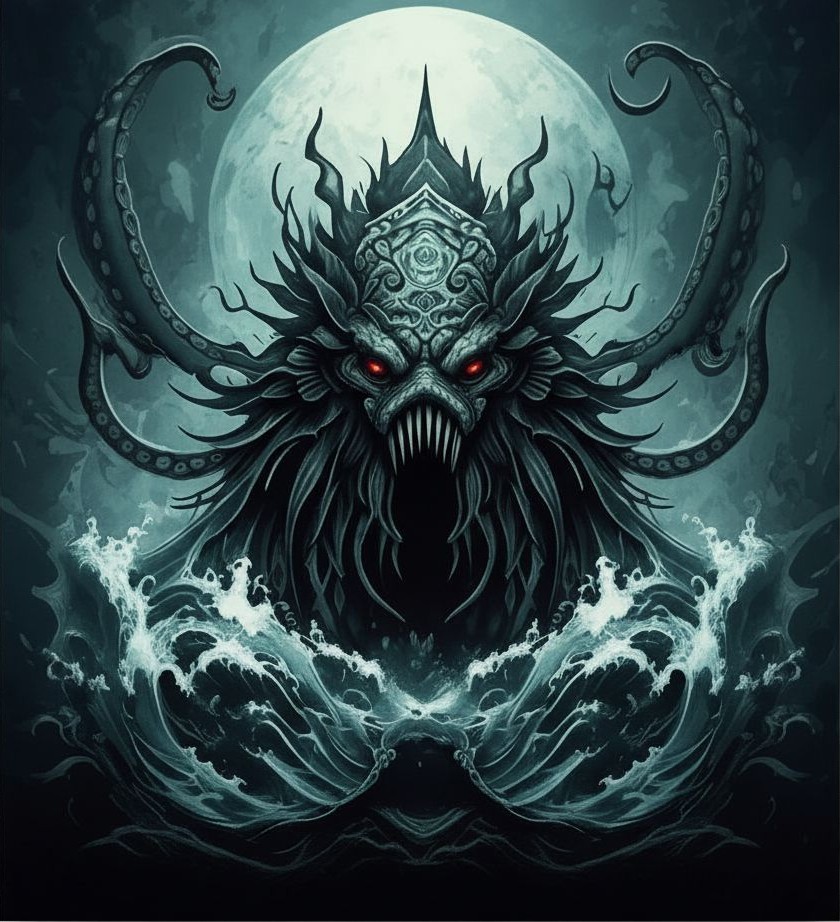
Krakens, the colossal sea creatures of Scandinavian folklore, have long captivated the human imagination. These gargantuan beasts, said to be capable of dragging ships and their crews to the depths, have found their way into the legends and literary works of many cultures, symbolizing the raw power and unpredictability of the ocean.
Legends and Folklore
The origins of the kraken can be traced back to ancient Scandinavian sagas and tales. These mythical creatures were described as massive, tentacled beasts that could surface from the depths, often near the coast of Norway, to attack ships and fishing boats. The kraken’s voracious appetite and sheer size were the stuff of nightmares for seafarers, who feared encountering these terrifying sea monsters.
- Krakens were believed to be as large as small islands, with tentacles that could wrap around and crush ships.
- Sightings of the kraken were often accompanied by reports of strange, swirling whirlpools or unusually calm waters, hinting at the creature’s presence beneath the surface.
- In Scandinavian folklore, the kraken was sometimes associated with the mythical Leviathan, a colossal sea serpent, further adding to the creature’s fearsome reputation.
The enduring legacy of the kraken continues to captivate audiences today, with the creature appearing in numerous works of literature, film, and popular culture. Exploring the origins and evolving depictions of these sea monsters offers insights into our fascination with the unknown and the forces that lurk beneath the waves.
Wendigos: Cannibalistic Spirits of the North
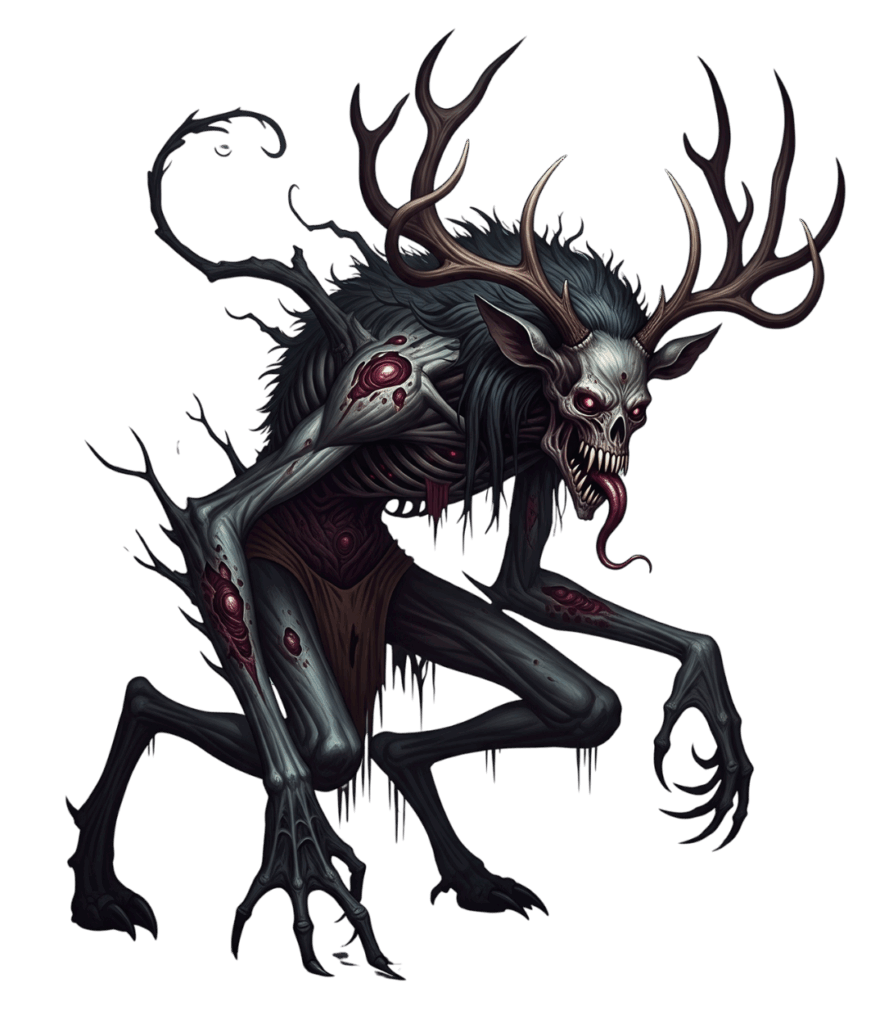
In the harsh, snowy landscapes of the northern regions, a terrifying entity lurks within the shadows of Native American mythology – the wendigo. This malevolent spirit is closely associated with the corrupting influence of insatiable greed and the horrific act of cannibalism.
The wendigo, a product of the unforgiving environment and the darkest corners of the human psyche, serves as a cautionary tale about the dangers of succumbing to one’s base desires. This mythical creature embodies the potential for darkness that lies within all of us, a stark reminder of the consequences of forsaking our humanity.
The legend of the wendigo has endured for centuries, captivating the imaginations of those who dare to venture into the frozen wilderness. As a symbol of the corrupting power of unchecked greed and the allure of the unknown, the wendigo continues to hold a powerful sway over the collective consciousness, representing our deepest fears and the fragility of the human spirit.
Harpies: The Ferocious Half-Human, Half-Bird Creatures
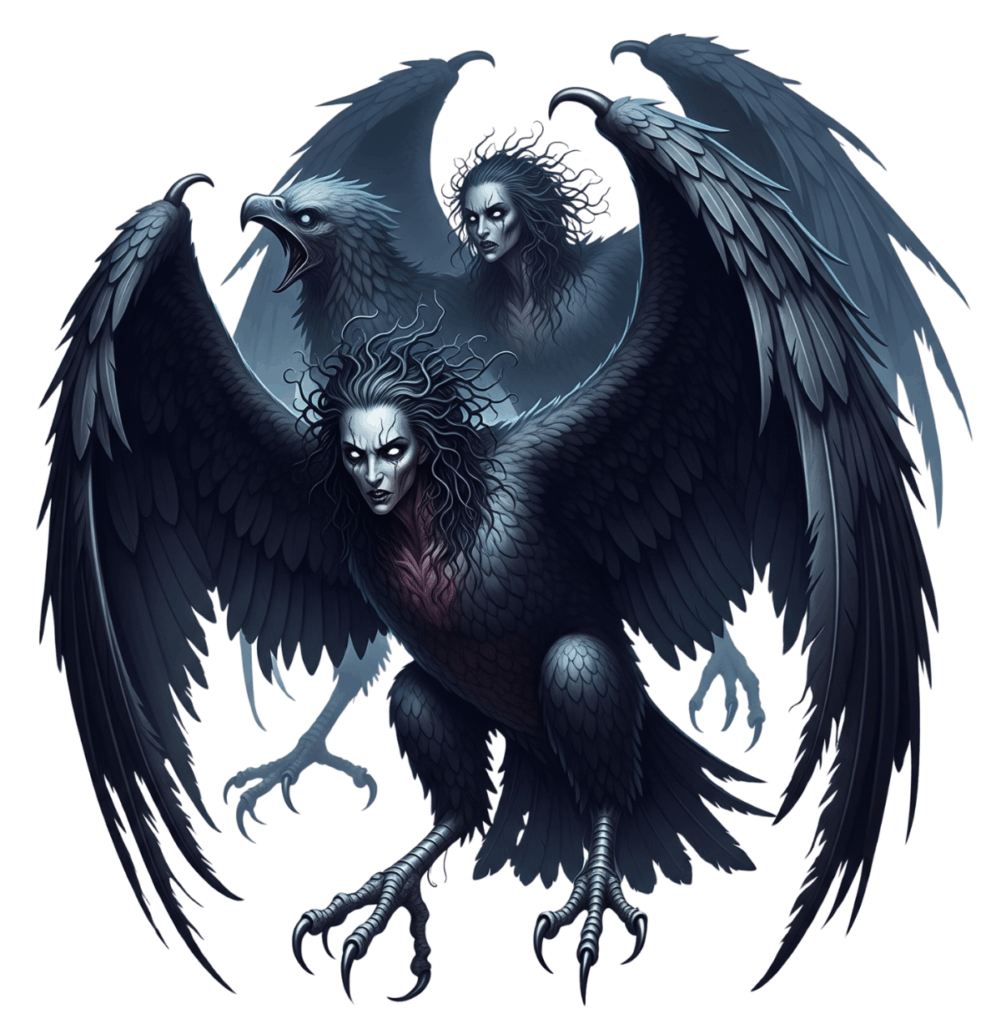
In the captivating realm of Greek mythology, harpies emerge as fearsome, winged creatures with the bodies of birds and the faces of women. These monstrous entities, often depicted as merciless scavengers and tormentors, have long been a source of fascination and dread. Exploring the symbolic significance of harpies and their diverse cultural representations offers insights into the enduring human intrigue with the blending of the human and the bestial, as well as the primal fears that have shaped our mythological narratives.
Mythology and Symbolism
Harpies, in Greek mythology, were typically portrayed as symbols of the sudden, violent storms that would sweep across the land. Their very names, derived from the Greek word “harpuiai” meaning “snatchers,” evoke the swift, unforgiving nature of these half-human, half-bird creatures. Harpies were often associated with the punishment of sinners, as they were believed to torment and carry away the souls of the condemned.
Cultural Representations
The enduring legacy of harpies can be seen in their prominent role in various cultural representations throughout history. From ancient Greek vase paintings to modern-day fantasy literature and films, these ferocious half-human, half-bird beings have captivated the imaginations of artists, writers, and audiences alike. The harpies‘ symbolism has evolved, reflecting the changing perspectives and fears of different societies, but their fundamental essence as harbingers of destruction and retribution remains a constant in Greek mythology and beyond.
Basilisks: The King of Serpents
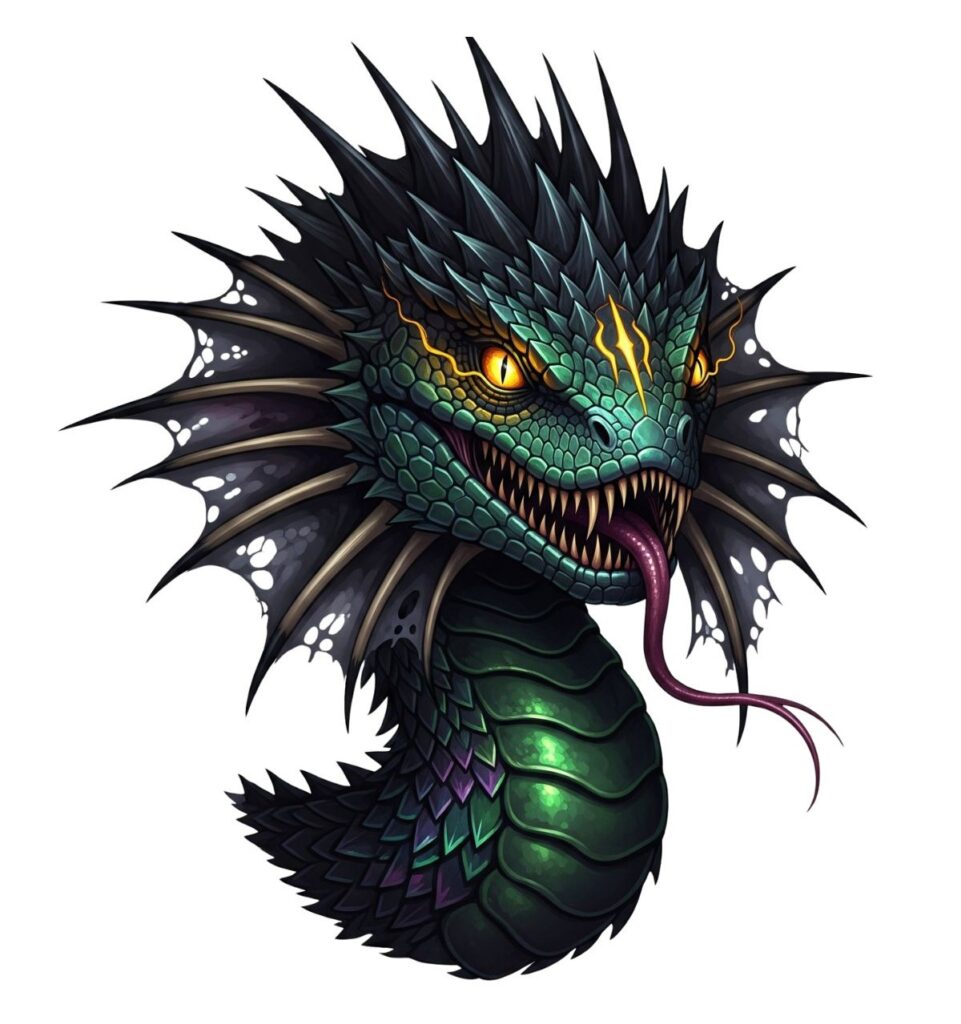
Basilisks, often referred to as the “king of serpents,” are mythical creatures that have captivated the imagination of storytellers and artists across cultures. These formidable reptilian entities are believed to possess the ability to turn onlookers to stone with a mere glance, adding to their fearsome reputation.
Origins and Powers
The origins of the basilisk can be traced back to ancient legends and folklore. Though the specifics vary, the common thread is the basilisk’s status as a powerful and deadly serpent. According to some accounts, the basilisk is born from the egg of a rooster, hatched by a toad, and its gaze is said to be so intense that it can kill not only humans but even other animals.
- The basilisk is often associated with the concept of the “king of serpents,” a title that reflects its dominance over other snakes and reptiles.
- In addition to its petrifying gaze, the basilisk is sometimes depicted as having other supernatural abilities, such as the power to poison the air and even kill with its breath.
- The mythical serpent’s origins and legends have been explored in various cultural and literary contexts, from ancient Greek and Roman texts to medieval bestiaries and modern fantasy narratives.
The enduring fascination with basilisks highlights the human desire to imbue the natural world with extraordinary, if not terrifying, capabilities. By exploring the origins and mythological powers of this fearsome creature, we can gain insights into the human psyche and the role of the supernatural in shaping our collective imagination.
Dullahans: The Headless Horsemen of Irish Folklore
Like this image? It’s available in a variety of stickers, prints, apparel, and more.
In the rich tapestry of Irish mythology, few figures capture the imagination quite like the Dullahans, the legendary headless horsemen who roam the countryside. These supernatural beings, steeped in the traditions and superstitions of the Emerald Isle, have long been viewed as ominous harbingers of death.
According to Irish folklore, the Dullahans ride atop ghostly black horses, wielding a whip crafted from the spine of a human. Their severed heads, which they carry in their hands, are said to glow with an eerie, otherworldly light, illuminating the path ahead as they gallop through the night. The mere sight of a Dullahan is believed to be a portent of impending doom, signaling that the end is near for those unfortunate enough to cross their path.
The enduring legacy of the Dullahans in Irish culture reflects the deep-rooted fascination with the supernatural that has long permeated the island nation. These headless horsemen serve as a powerful symbol of the ancient beliefs and superstitions that have shaped the collective psyche of the Irish people, reminding us of the enduring allure of the unknown and the supernatural.
Krampus: The Devilish Christmas Companion
Like this image? It’s available in a variety of stickers, prints, apparel, and more.
In the captivating folklore of Central Europe, Krampus emerges as a monstrous, horned creature who serves as the dark counterpart to the beloved Santa Claus. During the Christmas season, this devilish companion is said to punish naughty children, instilling a mix of fear and fascination in those who encounter him.
The enduring presence of Krampus in Christmas traditions underscores the human desire to grapple with the duality of good and evil. This complex relationship between the sacred and the profane shapes our cultural narratives, as we strive to make sense of the light and shadow that coexist within the holiday celebrations.
Krampus, with his fearsome appearance and ominous role, represents the acknowledgment that even the most joyous of occasions can harbor elements of the sinister and the unsettling. This dichotomy, rooted in the Krampus Christmas folklore, speaks to the multifaceted nature of the human experience, where the fantastical and the foreboding intertwine to create a rich tapestry of cultural traditions.
Scary Mythical Creatures and the Human Experience
The captivating journey through the realm of scary mythical creatures has unveiled the profound significance these enigmatic beings hold within diverse cultural traditions and mythologies. From the haunting wails of the banshee to the elusive and bloodthirsty chupacabra, these supernatural entities have captured the human imagination, reflecting our deepest fears, beliefs, and yearnings.
Exploring the origins, legends, and symbolism of creatures like the kraken, the wendigo, and the basilisk has shed light on the universal human experience of grappling with the unknown and the unseen. These mythical beings, imbued with deep cultural significance, continue to shape our collective consciousness, serving as vessels for our collective anxieties, aspirations, and the eternal human quest to understand the mysteries that lie beyond the veil of the tangible world.
As we bid farewell to this exploration of scary mythical creatures, we recognize the enduring power of these entities to captivate, inspire, and challenge our understanding of the world around us. Their enduring presence in our cultural narratives serves as a testament to the boundless human imagination and the timeless allure of the supernatural.
Want more scary mythical creatures? Don’t miss Part II of this series:
Five More Mythical Creatures, Cryptids, and Their Spooky Cultural Lore
FAQ
What are some of the most well-known scary mythical creatures?
Some of the most well-known scary mythical creatures include banshees, chupacabras, krakens, wendigos, harpies, basilisks, Dullahans, and Krampus. These beings are deeply rooted in the cultural mythologies and folklore of various regions around the world.
What is the significance of banshees in Irish folklore?
Banshees are wailing female spirits in Irish folklore believed to be harbingers of death, whose haunting cries foretell the impending demise of a member of a particular family. Banshees are deeply ingrained in the cultural identity of Ireland, serving as a powerful reminder of the fragility of life and the mysteries of the afterlife.
What are the origins and theories surrounding the chupacabra?
The chupacabra, a creature with a thirst for the blood of livestock, has captured the imagination of people across Latin America. Sightings of this enigmatic being have been reported for decades, sparking debates about its origins and fueling the desire to unravel the mystery behind its existence. Theories range from alien visitation to explanations rooted in natural phenomena.
What is the significance of krakens in Scandinavian folklore?
Krakens are monstrous sea creatures of Scandinavian folklore, believed to be capable of dragging ships and their crews to the depths. These gargantuan beasts have found their way into the legends and literary works of many cultures, symbolizing the raw power and unpredictability of the ocean. Exploring the origins and enduring legacy of the kraken offers insights into the human fascination with the unknown and the forces that lurk beneath the waves.
What is the cultural significance of the wendigo in Native American mythology?
The wendigo, a malevolent spirit in Native American mythology, is associated with cannibalism and the corrupting influence of unchecked greed. Originating in the harsh environments of the northern regions, the wendigo serves as a cautionary tale about the dangers of succumbing to one’s base desires and the consequences of forsaking one’s humanity. This mythical creature continues to hold a powerful sway over the collective imagination, embodying our deepest fears and the potential for darkness within the human psyche.
What are the key features and symbolism of harpies in Greek mythology?
In Greek mythology, harpies are fearsome, winged creatures with the bodies of birds and the faces of women. These monstrous entities, often depicted as merciless scavengers and tormentors, have long been a source of fascination and dread. Exploring the symbolic significance of harpies and their various cultural representations offers insights into the enduring human fascination with the blending of the human and the bestial, and the primal fears that have shaped our mythological narratives.
What are the origins and powers of the basilisk, the “king of serpents”?
The basilisk, a mythical serpent often referred to as the “king of serpents,” is a creature steeped in ancient legends and folklore. Believed to possess the ability to turn onlookers to stone with a mere glance, the basilisk has captured the imagination of storytellers and artists across cultures. Tracing the origins and mythological powers of this fearsome reptilian entity provides a glimpse into the human fascination with the natural world and the desire to imbue it with extraordinary, if not terrifying, capabilities.
What is the significance of Dullahans in Irish folklore?
The Dullahan, a headless horseman of Irish folklore, is a chilling entity believed to be a harbinger of death. These supernatural beings are said to ride through the countryside, carrying their own severed heads and announcing the impending demise of those they encounter. The enduring legacy of the Dullahan in Irish traditions provides a unique window into the cultural values and superstitions that have shaped the country’s rich mythological heritage.
What is the role of Krampus in Central European Christmas folklore?
In the folklore of Central Europe, Krampus is a monstrous, horned creature who serves as a dark counterpart to the benevolent figure of Santa Claus. During the Christmas season, Krampus is said to punish naughty children, inspiring a mix of fear and fascination. The enduring presence of this devilish companion in Christmas traditions underscores the human desire to grapple with the duality of good and evil, and the complex relationships between the sacred and the profane that shape our cultural narratives.



